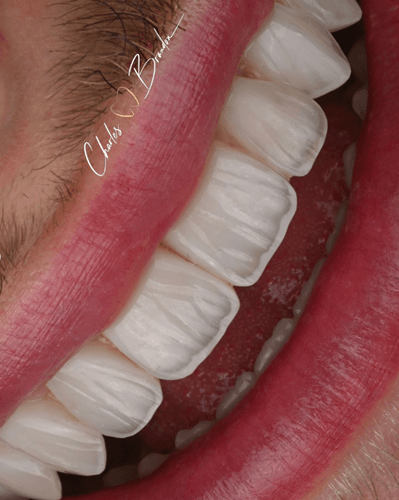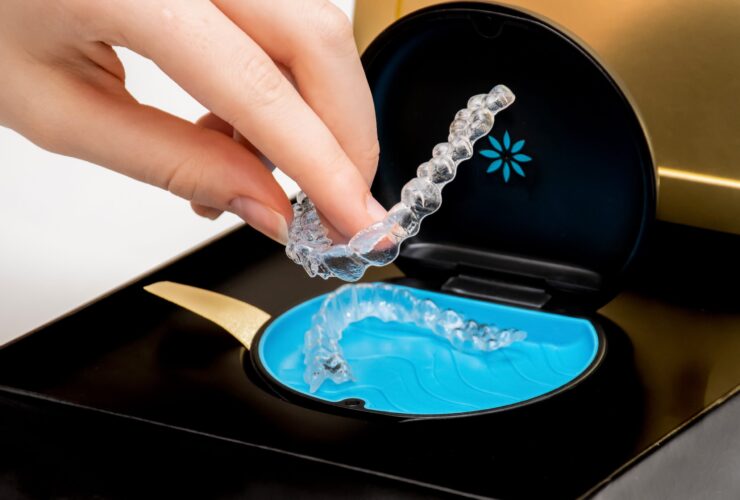If you are unhappy with the appearance of your teeth, composite bonding may be a good option for you. Composite bonding is a process in which dental composite material is bonded to the teeth in order to improve their appearance. This process can correct a wide variety of dental problems, including chips, cracks, discolouration, and gaps between the teeth. In this blog post, we will discuss the risks and benefits of composite bonding, as well as the treatment process involved. We will also talk about how the dental box team create beautifully crafted smiles with composite bonding, and how to care for your new smile!
Table of Contents
Risks and benefits of composite bonding
When considering composite bonding, it is important to understand the risks and benefits associated with this procedure. Some potential risks can include tooth sensitivity, staining or discolouration of the composite material, and a lack of durability if not done properly. If the bonding is well looked after and maintained it may not require replacement for many years, but it is important to understand that all bonding will require a degree of maintenance. On the other hand, composite bonding can provide a number of benefits including improved appearance and smile confidence, as well as providing a faster and more cost-effective result.
The treatment process
The composite bonding process begins with a comprehensive treatment plan. This plan will include an assessment of the existing teeth and gums, as well as a discussion of the desired outcome. Once the plan is finalised, it is time to begin the composite bonding procedure.
The process can often involve diagnostic wax-ups and customised stents which help to envision the finished product before applying composite materials. During the bonding appointment, clinicians use a gel to minimally prepare the tooth’s surface and a bonding agent to apply composite material to shape and contour the teeth in order to create a natural-looking smile.
Our cosmetic dental team utilises the golden proportions concept with our smile makeovers. This refers to a technique that uses ratios for tooth length, width, and shape for the most balanced and natural-looking result. They will also consider colour, hue and the harmony between facial features when designing smiles.
What should I consider?
If you have a very large amount of crowding or large gaps, we may suggest to you combine your composite bonding with orthodontics such as Invisalign. This is to ensure we can achieve a balanced result within the correct ratios and not remove large amounts of tooth tissue to give the appearance of alignment.
It is also important to note that teeth whitening should be done before composite bonding, as composite material does not whiten. In addition, composite bonding may require multiple visits in order to achieve the desired result. During your appointment, you’ll likely be sat up and laid down to achieve the perfect polishing and shaping, but sometimes there’s nothing better than living with the bonding for a few days for you to really get a feel for the result so we book a review appointment 1 to 2 weeks after the initial bonding session. We expect you to have a few comments and your thoughts & opinions are welcomed, it’s your smile after all! We want you to be thrilled.
How do I take care of my bonding?
After composite bonding is complete, it is essential to practice good dental hygiene and wear a nightguard as necessary in order to protect your new smile. This is especially true for patients that have a habit of grinding or clenching their teeth. Nail biting too can cause problems for bonding that wraps over the edge of the tooth. Composite bonding will also need to be maintained with regular polishing and should be replaced every five to ten years.
What are the alternatives to bonding?
Porcelain veneers can be an alternative when composite bondings are not a suitable treatment option. While composite bonding is a great way to restore small chips and cracks, it may not hold up as long as porcelain veneers. Porcelain veneers offer patients a longer-lasting, more durable, and more aesthetically pleasing solution. They are designed to mimic the natural tooth enamel, making them almost indistinguishable from your original teeth. But, they do require more preparation of the tooth surface, more appointments and are more costly in comparison.
Orthodontics can also offer a great solution to improving a smile.
In conclusion, composite bonding is an effective way to improve the appearance of your teeth and smile. Understanding the risks and benefits associated with composite bonding and the treatment process involved can help you make informed decisions about your oral health care. With composite bonding, dentists are able to create beautiful, natural-looking smiles that can last for years with proper care and maintenance.
We hope this blog post has given you a better understanding of composite bonding and how it can help you achieve your desired smile makeover goals!
If you have any additional questions, please contact us 01892 254 879 or info@thedentalbox.co.uk. One of our friendly team will be happy to discuss composite bonding in further detail and help you decide if this procedure is right for you.



